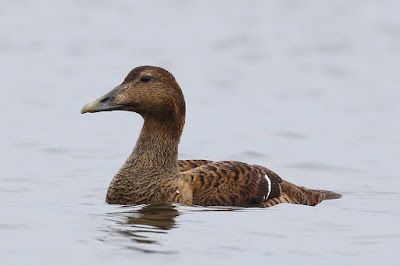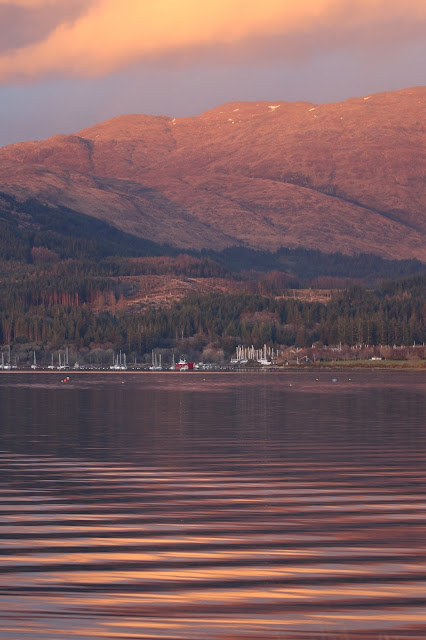It's traditional on our family holidays, if I pretend to be enjoying myself convincingly enough visiting shops, playgrounds, tea rooms etc, for me to be granted a day to myself to indulge in some wildlife watching and photography by way of a reward. And so it was last week in Scotland when I decided to try my luck on the rugged Morvern peninsula. The area enjoys high concentrations of both White-tailed and Golden Eagle, and there is also a good chance of Otter on the sea lochs.
 |
| Ringed Plover, Loch Sunart |
 |
| Their presence given away by gentle, piping calls |
 |
| Wheatear had been arriving in Dorset shortly before we left for Scotland - this one had done well to make it this far north |
Having just caught the third Corran Ferry of the morning, my first stop was on the Ardgour side to check out the Black Guillemot colony in the rusty piers by the ferry slipway. I had seen plenty already in Oban but you can't have too much of a good thing and they did not disappoint.
 |
| Black Guillemot, Ardgour |
 |
| A colony breeds on the rusty piers. Ten individuals are visible in this shot. |
 |
| And when I say breed... |
After Ardgour it was across familiar but still breathtaking territory to Strontian, stopping occasionally for photos of Great Northern Divers in Loch Linnhe from the roadside. From there I broadly followed an itinerary in Gordon Hamlett's
Best Birdwatching Sites in the Scottish Highlands, along the southern shore of Loch Sunart for a chance of Otters and Eagles. I saw neither, but a close encounter with a pair of Ringed Plover and a fresh-in Wheatear were some reward.
 |
| Great Northern Diver moulting into breeding plumage on Loch Linnhe |
 |
| Drake Goldeneye, Loch Arienas |
 |
| Female Goosander, Loch Arienas |
Then it was a long climb up Gleann Geal, pausing occasionally to scan for raptors, before dropping back down towards the Black Glen and the choppy waters of Loch Arienas. Pairs of Goosander and Goldeneye were the best I could manage there, so I retraced my steps to get back on the road to Lochaline. The guide book suggested scanning for Otter from the ferry slipway, so being the obedient sort that's what I did, and the first shape I 'scoped on the water turned out to be one. If only it were always that easy..
 |
| The best I could manage of the Otter at Lochaline |
 |
| A slightly closer mammal in the form of a bold Red Deer stag near Kingairloch |
 |
| Male Stonechat near Kingairloch |
A scan with bins down the Sound of Mull caused a double-take when I saw the huge bulk of what could only be a White-tailed Eagle sitting on some distant rocks. I returned to the car to grab the telescope, only to find the bird gone by the time I had set it up! Very frustrating, it would have been a good telescope view, and despite much scanning I was left to conclude that it must have headed off to the south rather than in my direction.
 |
| Buzzard or 'Tourist's Eagle' as they are known in these parts |
 |
| The sun rising over Loch Linnhe looking back to the Corran Ferry |
 |
| View over Loch Sunart |
No matter, I wasn't going to let it spoil my day, and by now it was already time to be heading back, which I did via Kingairloch and the coastal route along the shore of Loch Linnhe. An impressive stretch of highway pock-marked by rockfalls, it passes under a high cliff reminiscent of
the road under the Gribun Rocks on Mull. Not a hugely productive day on the Eagle front, then, but an enjoyable trek through some outstanding landscapes all the same. Can't wait to go back.


























































